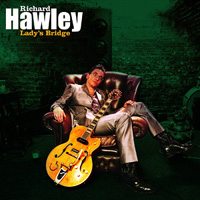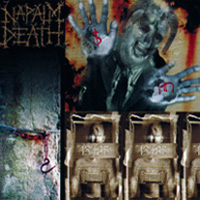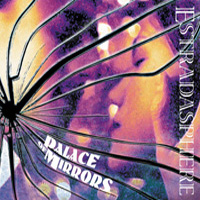 Richard Hawley
Richard Hawley
Lady’s Bridge (Mute)
by Tim Den
Call him what you will – Elvis of the North, Roy Orbison of Sheffield, British Frank Sinatra – but there’s no mistaking Richard Hawley‘s voice. After Coles Corner finally brought the singer/songwriter the mass attention he always deserved, the man has become the reference point instead of the other way around: No more calling him a throwback to the late ’50s balladeer, cuz he’s risen above comparisons and come into his own. Let’s now set aside nostalgic trips down memory lane and focus entirely on the present: How fucking unreal Hawley’s songs continue to be. Lady’s Bridge, if I dare say so, is even more cohesive and to-the-point than Coles Corner, with tighter hooks and a more diverse palette of tempos. Don’t get me wrong, I’m not saying buying Lady’s Bridge will make anyone happier than if they’d purchased Coles Corner, but simply that Hawley sounds like he’s learning to keep things leaner than ever. Within standouts such as “Serious,” “Tonight the Streets Are Ours,” and “Our Darkness,” there’s never a breath, note, silence, or repeated chorus wasted. Each and every second is used to construct a nearly flawless structure of beauty. The song starts, it nails you with its essence, hypnotizes you with a few swooning turns, and then WOOSH! It’s gone. Hit ’em and leave ’em wanting more, the sign of a true songwriter. And it doesn’t matter if the mood is joyous (“Tonight the Streets Are Ours”), forlorn (“Our Darkness”), or slightly mischievous (“Serious”), cuz Hawley obviously knows how to utilize setting to the benefit of the songs. The first four numbers on Lady’s Bridge might be drastically different from each other time signature wise, but you never notice because they’re such strong compositions that sound naturally fluid in their environment.
Perhaps opener “Valentine” is the best example of Hawley’s prowess. Over three simple chords backed by a lovely string section, he harnesses drama large enough to knock down silver screens. Vocal harmonies come in at just the right time to accentuate the established melody, while emotions ebb like receding tides just before surging forward in the tidal wave that is the chorus. It leaves you flat out breathless.
Such ungodly praise, however, unfortunately cannot be heaped upon every single entry on Lady’s Bridge. The record hits a serious snag in the middle, with “Lady Solitude” lacking sufficient conviction, “Dark Road” ripping off both “Don’t Be Cruel” and Hawley’s own “The Ocean” to construct a verse melody, and “The Sea Calls” devoid of any redeeming quality. Having the three weakest links right next to each other seriously hinders the listener from wanting to move beyond them, even though the end of the album takes an upswing back to form. But if you do get past ’em (there’s always the fast forward button), you’ll encounter further evidence of genius, ending with the sublime “The Sun Refused to Shine.”
Lady’s Bridge, as its title suggests, is an album filled with references to crossing from one place to another. Be it physical, mental, or emotional, there are inescapable mentions of leaving in almost every single song. Seeing as Hawley lost his father during the making of the album, the sentiments are understandable. But perhaps the message could also be interpreted as Hawley finally crossing over into the pantheon of classic songwriters, where he now sits comfortably and continues to craft timeless relics of sonic pleasure. I implore everyone to walk on Lady’s Bridge, for you yourselves will also find that you’ve left behind the mundane of much of the musical climate and entered a world from which you will never return: The world of being a Richard Hawley fan.
(www.mute.com)



